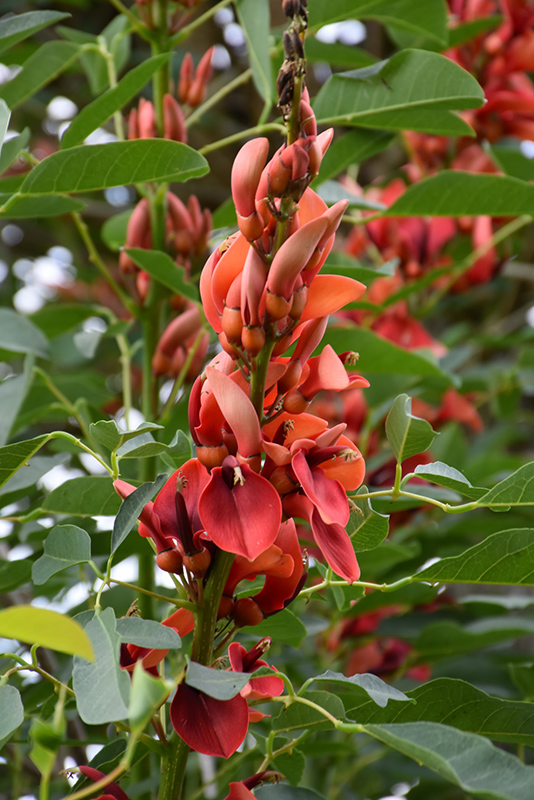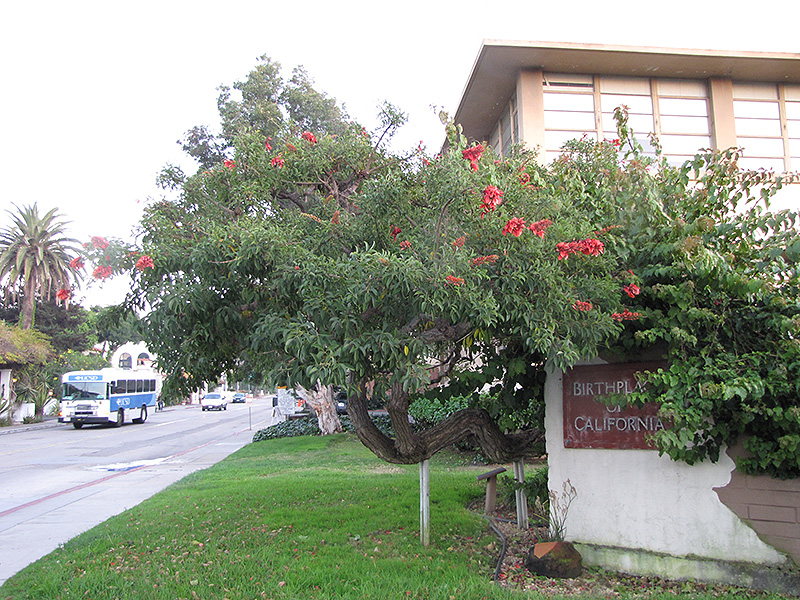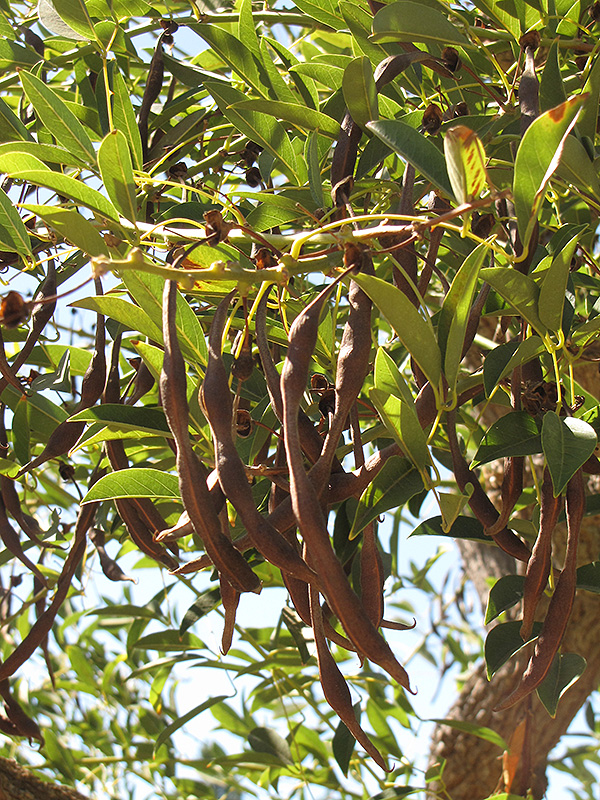Height: 30 feet
Spread: 30 feet
Sunlight:
![]()
Hardiness Zone: 8b
Other Names: Fireman's Cap Tree, Cry Baby
Description:
A deciduous tree with an upright, spreading habit on a rough, furrowed trunk; dazzling orange-red flower clusters, blooming year round; foliage is smaller than the species and pointed; attracts hummingbirds
Ornamental Features
Cockspur Coral Tree features showy clusters of coral-pink tubular flowers at the ends of the branches from late winter to late fall. It has dark green deciduous foliage. The pointy leaves turn an outstanding yellow in the fall. The fruits are showy yellow pods displayed in late summer. The rough gray bark adds an interesting dimension to the landscape.
Landscape Attributes
Cockspur Coral Tree is a multi-stemmed deciduous tree with an upright spreading habit of growth. Its relatively coarse texture can be used to stand it apart from other landscape plants with finer foliage.
This is a relatively low maintenance tree, and should only be pruned after flowering to avoid removing any of the current season's flowers. It is a good choice for attracting bees, butterflies and hummingbirds to your yard. It has no significant negative characteristics.
Cockspur Coral Tree is recommended for the following landscape applications;
- Accent
- Shade
Planting & Growing
Cockspur Coral Tree will grow to be about 30 feet tall at maturity, with a spread of 30 feet. It has a high canopy with a typical clearance of 4 feet from the ground, and should not be planted underneath power lines. It grows at a slow rate, and under ideal conditions can be expected to live for 40 years or more.
This tree should only be grown in full sunlight. It prefers dry to average moisture levels with very well-drained soil, and will often die in standing water. It is considered to be drought-tolerant, and thus makes an ideal choice for xeriscaping or the moisture-conserving landscape. It is not particular as to soil type or pH. It is somewhat tolerant of urban pollution. Consider applying a thick mulch around the root zone in winter to protect it in exposed locations or colder microclimates. This species is not originally from North America, and parts of it are known to be toxic to humans and animals, so care should be exercised in planting it around children and pets.




